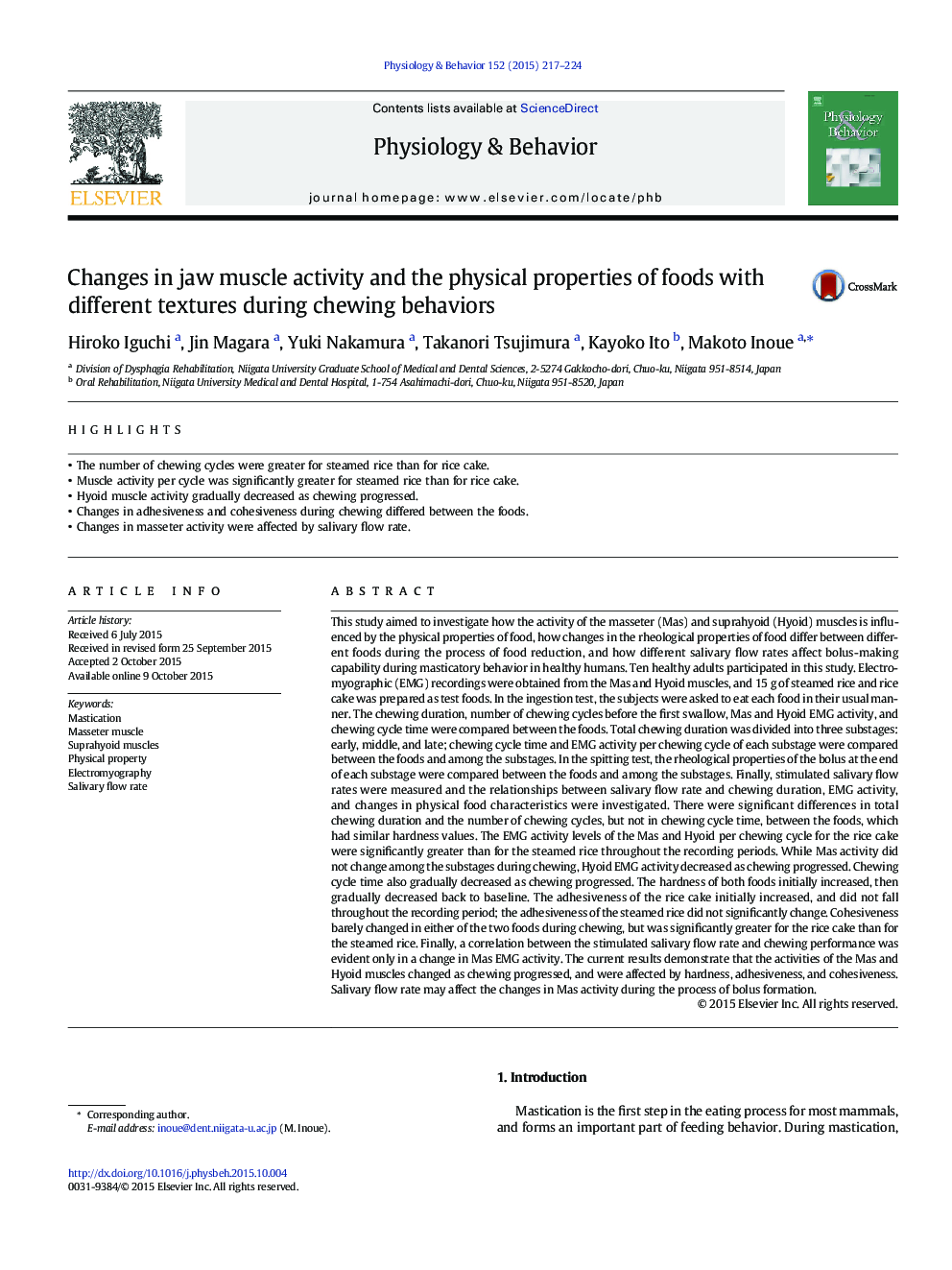| کد مقاله | کد نشریه | سال انتشار | مقاله انگلیسی | نسخه تمام متن |
|---|---|---|---|---|
| 5923081 | 1166292 | 2015 | 8 صفحه PDF | دانلود رایگان |
- The number of chewing cycles were greater for steamed rice than for rice cake.
- Muscle activity per cycle was significantly greater for steamed rice than for rice cake.
- Hyoid muscle activity gradually decreased as chewing progressed.
- Changes in adhesiveness and cohesiveness during chewing differed between the foods.
- Changes in masseter activity were affected by salivary flow rate.
This study aimed to investigate how the activity of the masseter (Mas) and suprahyoid (Hyoid) muscles is influenced by the physical properties of food, how changes in the rheological properties of food differ between different foods during the process of food reduction, and how different salivary flow rates affect bolus-making capability during masticatory behavior in healthy humans. Ten healthy adults participated in this study. Electromyographic (EMG) recordings were obtained from the Mas and Hyoid muscles, and 15Â g of steamed rice and rice cake was prepared as test foods. In the ingestion test, the subjects were asked to eat each food in their usual manner. The chewing duration, number of chewing cycles before the first swallow, Mas and Hyoid EMG activity, and chewing cycle time were compared between the foods. Total chewing duration was divided into three substages: early, middle, and late; chewing cycle time and EMG activity per chewing cycle of each substage were compared between the foods and among the substages. In the spitting test, the rheological properties of the bolus at the end of each substage were compared between the foods and among the substages. Finally, stimulated salivary flow rates were measured and the relationships between salivary flow rate and chewing duration, EMG activity, and changes in physical food characteristics were investigated. There were significant differences in total chewing duration and the number of chewing cycles, but not in chewing cycle time, between the foods, which had similar hardness values. The EMG activity levels of the Mas and Hyoid per chewing cycle for the rice cake were significantly greater than for the steamed rice throughout the recording periods. While Mas activity did not change among the substages during chewing, Hyoid EMG activity decreased as chewing progressed. Chewing cycle time also gradually decreased as chewing progressed. The hardness of both foods initially increased, then gradually decreased back to baseline. The adhesiveness of the rice cake initially increased, and did not fall throughout the recording period; the adhesiveness of the steamed rice did not significantly change. Cohesiveness barely changed in either of the two foods during chewing, but was significantly greater for the rice cake than for the steamed rice. Finally, a correlation between the stimulated salivary flow rate and chewing performance was evident only in a change in Mas EMG activity. The current results demonstrate that the activities of the Mas and Hyoid muscles changed as chewing progressed, and were affected by hardness, adhesiveness, and cohesiveness. Salivary flow rate may affect the changes in Mas activity during the process of bolus formation.
Journal: Physiology & Behavior - Volume 152, Part A, 1 December 2015, Pages 217-224
